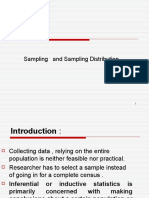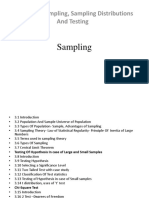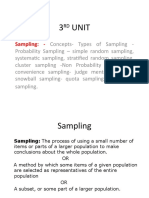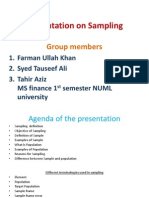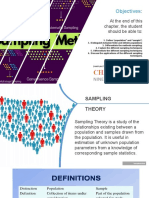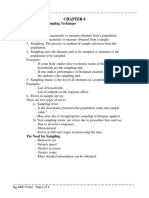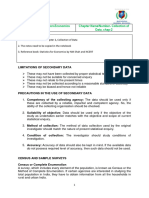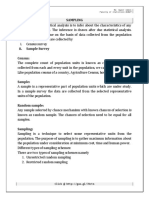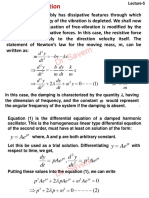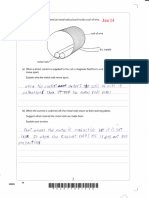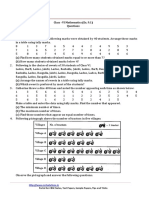0% found this document useful (0 votes)
35 views42 pagesUnit III Sampling
Unit III covers sampling techniques, distinguishing between census and sampling methods, and their applications in statistical analysis. It explains the importance of inferential statistics, the definition of population and sample, and various sampling methods including probability and non-probability sampling. The document also outlines the process of selecting samples, types of sampling such as simple random, stratified, and systematic sampling, along with their merits and demerits.
Uploaded by
Sujal AdkCopyright
© © All Rights Reserved
We take content rights seriously. If you suspect this is your content, claim it here.
Available Formats
Download as PDF, TXT or read online on Scribd
0% found this document useful (0 votes)
35 views42 pagesUnit III Sampling
Unit III covers sampling techniques, distinguishing between census and sampling methods, and their applications in statistical analysis. It explains the importance of inferential statistics, the definition of population and sample, and various sampling methods including probability and non-probability sampling. The document also outlines the process of selecting samples, types of sampling such as simple random, stratified, and systematic sampling, along with their merits and demerits.
Uploaded by
Sujal AdkCopyright
© © All Rights Reserved
We take content rights seriously. If you suspect this is your content, claim it here.
Available Formats
Download as PDF, TXT or read online on Scribd
/ 42












